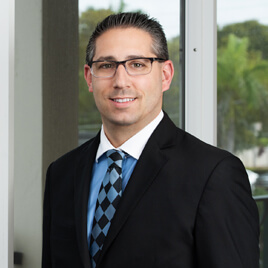
It is without question that public adjusters and loss consultants often have a vested interest in the amount of money at issue in an insured’s first-party property claim, as the public adjuster and/or loss consultant typically gets a percentage of the recovery.
As such, there can be an incentive for a public adjuster or loss consultant to submit an inflated estimate of damages to the insurance company.
This, of course, begs a very interesting and important question – when does what appears to be an unreasonable estimate of damages rise to the level of potential insurance fraud? The answer, or at least one answer, may be found in a recent opinion by the Fourth District Court of Appeals in Jennifer Mezadieu v. Safepoint Insurance Company.
In Mezadieu, an insured made a claim for a plumbing leak which originated in her second-floor bathroom. In furtherance of her claim, the insured hired Contender Claims, to ask her loss consultant to conduct an investigation and provide a detailed estimate of the damages. Contender Claims subsequently proffered an estimate of the insured’s damages totaling $43,181.01, and similar to the hypothetical example discussed above, included damages to nearly every room of the property. The insurer subsequently denied the claim and the insured filed suit for damages stemming from the claim.
During litigation the insurer propounded written factual interrogatories, one of which asked the insured to “[d]escribe in as much detail as you will provide at trial the damages you are claiming as a result of the lawsuit and please provide an itemized breakdown of the damages as well as your method of calculation.” The insured responded that the damages totaled “$43,181.01, as per the written estimate prepared by [Contender] …..” Thereafter, during her deposition, the insured again referenced the Contender Claims estimate and confirmed that she was claiming $43,181.01 in damages. However, when questioned about the line items of the estimate, as they pertained to the kitchen (including damage to the kitchen cabinets)[1], the insured admitted that the kitchen cabinets had been damaged by a prior leak in the kitchen, for which a claim was made with a different insurer, and that the current claim did not cause any damage to the kitchen cabinets. Additionally, the insured acknowledged that she did not see damage in any of the other rooms on the first floor of the property and that the water remediation company she hired did not render any services on the first floor (despite the fact that such damages were included in the estimate the insured was relying upon).
As a result of the deposition testimony and the sworn written interrogatories, the insurer amended its answer and Affirmative Defenses to include a defense based on the operative policy’s “concealment or fraud” provision which precluded coverage for damage otherwise covered by the policy in the event that “whether before or after the loss, one or more of the “insureds”:
- Intentionally concealed or misrepresented any material fact or circumstance;
- Engaged in fraudulent conduct; or
- Made material false statements;
Relating to this insurance.”
The lawsuit eventually proceeded to a hearing on the insurer’s summary judgment motion. At the hearing, the insured contended that while she agreed with the filed Sworn Proof of Loss[2] and adopted the Contender estimate, the estimate should not have included the $11,000 in damages related to the kitchen cabinets and it would therefore be appropriate for the trial court to grant partial summary judgment or otherwise strike $11,000 from the total amount of damages claimed. The trial court concluded that the false statements made in the Contender estimate were “attributable” to the insured because she not only adopted the estimate as her own in the sworn interrogatory answers and deposition testimony, but because her Sworn Proof of Loss was identical to the amount of damages sought in the Contender estimate, and because Contender Claims was acting as her agent.
On appeal, the insured argued that she should not be punished for the estimate prepared by Contender because she “did not intentionally rely on the false statements contained therein.” The Fourth District Court of Appeals, however, agreed with the insurer and held that intentionality is not required and that the material false statements made in the estimate were “attributable” to the insured because she adopted the estimate as her own statement and cited to the holding in Dicus v. Dist. Bd. Of Trs. for Valenica, 734 So. 2d 563, 564 (Fla. 5th DCA 1999) (it is well established that “[a] party is bound by his or her admissions under oath, be it by deposition or interrogatories.” (citing Ondo v. F. Gary Gieseke, P.A., 697 So. 2d 9521 (Fla. 4th DCA 1997)). Additionally, the Fourth District Court of Appeals relied upon Oscanyan v. Arms Co., 103 U.S. 261, 263 (1880) in finding that the attorney’s concessions, standing alone, established that the estimate contained materially false statements, as a matter of law. The Fourth District Court of Appeals also rejected the insured’s argument that “she should not be held responsible for the false statements made in the estimate” because she relied on the estimate in making the claim and made no attempt to revise the estimate prior to the summary judgment hearing. Continuing, the Fourth District Court of Appeals explained that “even if the [insured] did not intend to rely on the false statements contained in the estimate, a showing of intent is not required under the policy’s concealment or fraud provision.” In closing, the Fourth District stated that “an insured cannot blindly rely on and adopt an estimate prepared by his or her loss consultant without consequences [and] that when an insured relies on or adopts an estimate containing material false statement to support his or her claim, the insured is bound by the estimate and cannot avoid application of the concealment or fraud provision simply because he or she did not prepare the estimate.”
However, the Fourth District Court of Appeals was careful to constrain this comment and articulated that an insured will not “always be bound by the representations made in an estimate prepared by his or her loss consultant.” The import of this last statement is apparent in the holding in Anchor Property and Casualty Insurance Company v. Alex Trif and George Trif, 46 Fla. L. Weekly D1267a.
The Trif Decision
In Trif, the insureds made a claim for damages stemming from Hurricane Irma, which was denied by the insurer. Thereafter, in support of a supplemental claim, the insureds’ hired Exactimators to investigate the claim and provide an estimate of damages. The estimate set forth a “net claim” of $103,809.68 including damages to the roof and screened pool enclosures. As in Mezadieu, the insureds’ Sworn Proof of Loss was identical to the estimate in the amount of damages being sought, and while the estimate was not referenced in the Sworn Proof of Loss, the insureds conceded that the damages set forth therein were based on the Sworn Proof of Loss.
During litigation, the insurer included the “Concealment or Fraud” provision of the operative policy in its Answer and Affirmative Defenses and alleged that the insureds made willful misrepresentations and materially false statement regarding the pre-loss condition of the property as the insureds had “denied that any pre-loss roof leaks had occurred,” when a 2012 insurance claim investigation revealed roof leaks. Additionally, and of most significance in this decision, the insurer claimed that the insureds made willful misrepresentations and materially false statements regarding the “extent and/or amount of damage” at issue, specifically, the extent of damage to the flooring in the property, as the insureds had denied that any pre-loss roof leaks had occurred.
During trial, the insureds indicated that they had been given different estimates of the costs to replace the roof on the property and acknowledged that one of the competing estimates for $32,000 was “a lot less” than the $52,800 estimate provided by Exactimators for the same roof replacement. Additionally, the insureds stated that they were “professionally advised” to submit the Sworn Proof of Loss in the amount of $103,809.68. As a result of the foregoing, the insurer moved for a directed verdict as to the “Concealment or Fraud” provision of the operative policy. The trial court, however, found that the insurer failed to plead with specificity that the insureds violated the “Concealment or Fraud” provision of the operative policy by submitting a Sworn Proof of Loss based on a material misrepresentation concerning the cost to replace the roof, and cited to the handling in Cocoves v. Campbell, 819 So. 2d 910, 912 (Fla. 4th DCA 2002) in support thereof. (“When a party asserts fraud as a defense, the pertinent facts and circumstances constituting fraud must be pled with specificity, and all the essential elements of fraudulent conduct must be stated.”).
The trial court heard argument on this case on several salient points of law including, inter alia, what a material misrepresentation of fact is and whether intentionality is required in making such a statement.
However, the Fourth District Court of Appeals was careful to distinguish Trif from Mezadieu. The Fourth District Court of Appeals stated that unlike in Mezadieu, where the insureds “clearly knew” that the kitchen had not been damaged by the leak, in Trif, a reasonable jury could have concluded that the insureds “did not make any material false statements in connection with the Sworn Proof of Loss because, viewing the evidence most favorable to the insureds, (1) there was no admission that the $52,800 roof replacement estimate was false as opposed to a mistake or merely a high estimate; … and (2) the public adjuster corrected the roofing estimate before [the insurer] made any argument that it was inflated.”
Additionally, the Trif court found that because the insurer had already inspected the roof and denied coverage for it, a reasonably jury could have concluded that the high initial roofing estimate was not material because it was not likely to affect the conduct or investigation of a reasonable insurer in the same position (i.e. that the insurer conducted the investigation, inspected the roof and denied coverage).
In conclusion, Mezadieu stands for the premise that while unintentional, the submission of an estimate containing damages which were claimed for a different loss, is attributable to the insured when adopted by the insured and upon which the insured relied in submitting it sworn interrogatory responses and Sworn Proof of Loss. In contrast however, the Trif court found that an inflated estimate, while relied upon by the insured, is not a material misrepresentation of fact when such an estimate is provided after an inspection and a coverage determination has been rendered by the insurer.
[1] The kitchen is directly beneath the bathroom where the plumbing leak purportedly originated.
[2] The amount claimed in the Sworn Proof of Loss was identical to the amount of damages listed on the Contender Estimate


